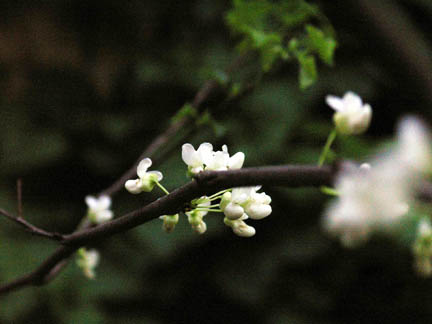| General Description | C. Canadensis is a well detailed and known small ornamental tree, which creates a pink lavender colour flowers. Young and very small growth habit and ornamental bark and branching character with age and considered with its tendency to have short functional service for life of about fifteen years in urban landscapes such as urban areas and local towns or cities. |
| ID Characteristic | Heart shaped leaves occur on the new growth of zigzag stems, while floral buds occur on second year wood but can arise from any branches and trunk of the tree. Ornamental orange brown bark occurs with age, as the tree transitions from a juvenile vase shape to one that is rounded or leaning (irregular). |
| Shape | Upright vase growth habit in youth if grown in an open area, becoming spreading rounded to irregular shaped sometimes leaning with age. |
| Landscape | Flowering tree can be used as a street tree or for a home owner a great focal point tree in the front garden or back garden of a home/property. |
| Propagation | Cultivars are bud grafted or micropropagated. |
| Cultivation | Full sun to light shade likes a moist well drained soil but is adaptable to moist soils that are not always wet. |
| Pests | Eastern redbud has a few pests. Stem canker, leaf spots and verticillium wilt may be a problem. The plant may experience some insect damage from leaf rollers, tree hoppers and aphids. |
| Notable Specimens | Fanshawe College gardnes, London, Ontario, Canada |
| Habitat | Horticultural origin. |
| Bark/Stem Description | Bark on stems is a reddish brown to dark brown older branches have a scaly dark brown bark that exfoliates some to reveal orange colour inner bark. |
| Flower/Leaf Bud Description | Terminal-absent laterals-small blunt, blackish red somewhat flattened and appressed one or more superposed buds often present bud scales overlap. |
| Leaf Description | Simple leaf pattern shape of leaf is ovate the length of each leaf blade can grow up to between five to ten centimeters the colour of the leaf is usually green and will turn into a yellow colour in the autum season. |
| Flower Description | Small, clustered, sessile dark brown floral buds swell to purple-lavender buds in early spring, slowly opening to pink-lavender flowers. Flowers may be directly on the trunk or braches, but most are on two year old wood. |
| Fruit Description | Pod shape can grow in length of one to three inches the covering can be dry or hard and the colour of the pod is usually brown. Does not attract any wildlife, no significant litter problem persistent to the tree. |
